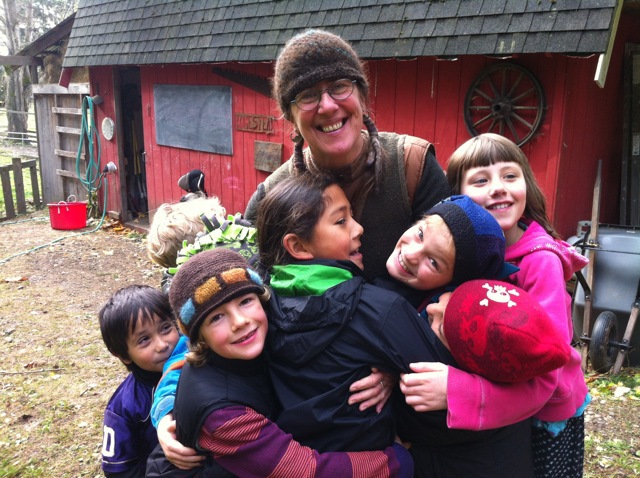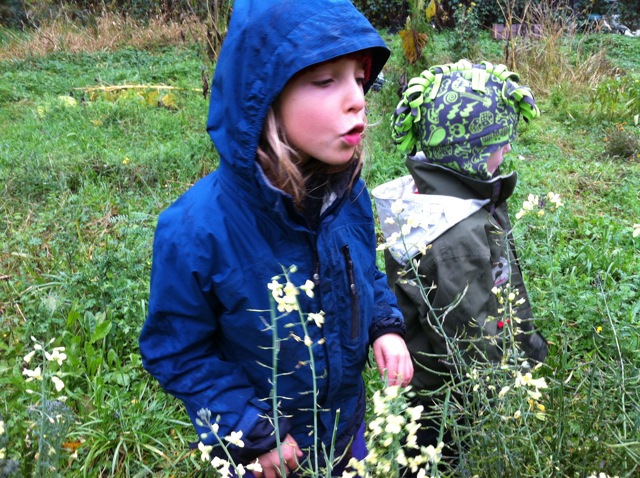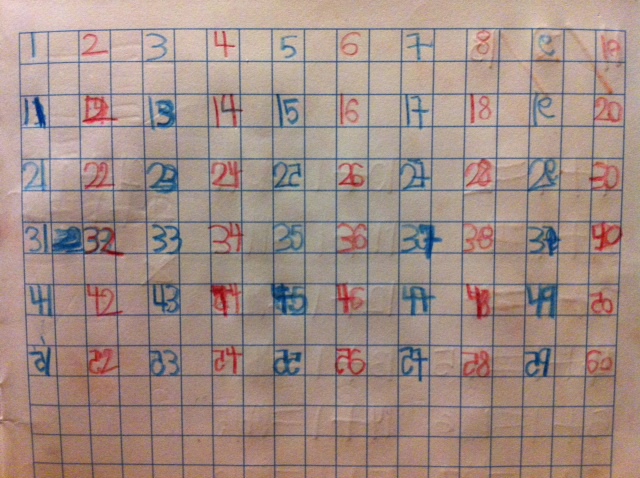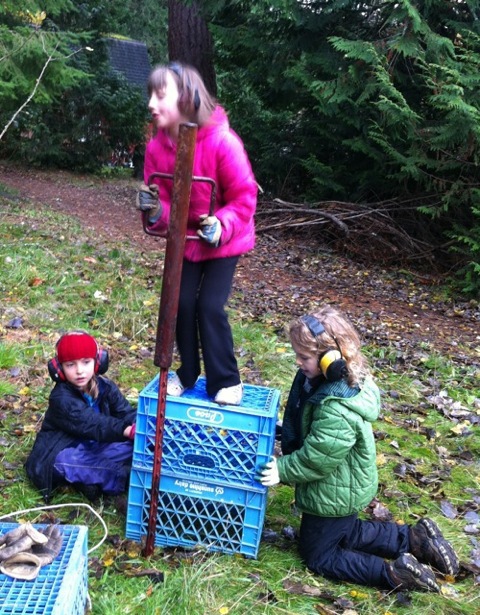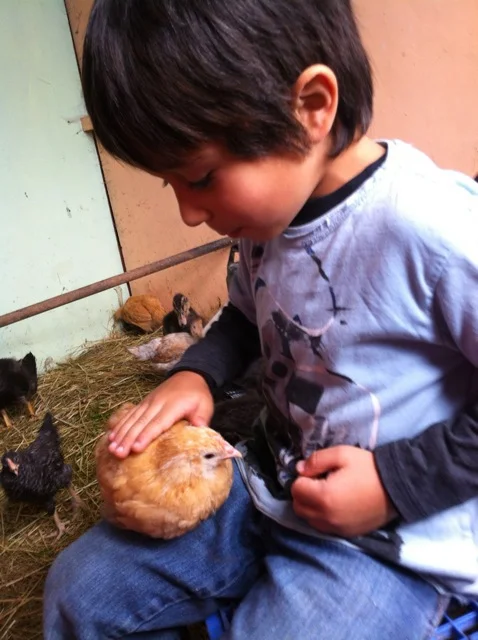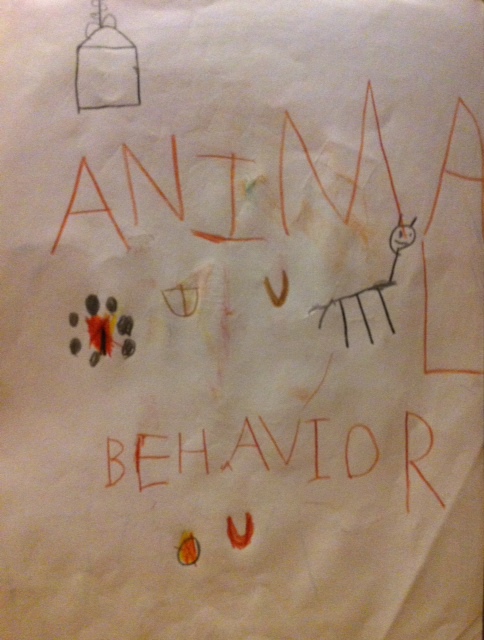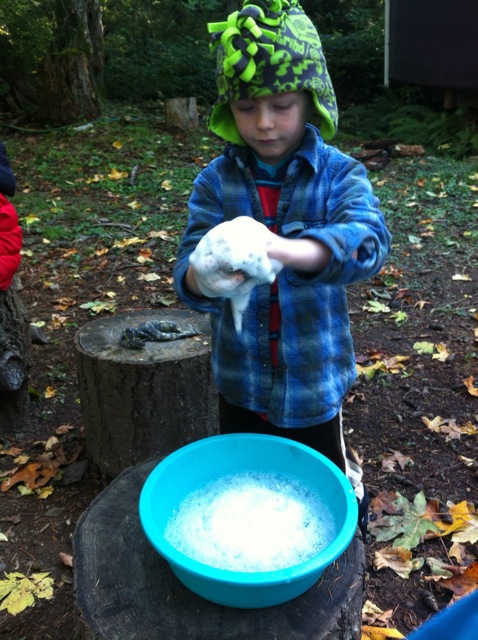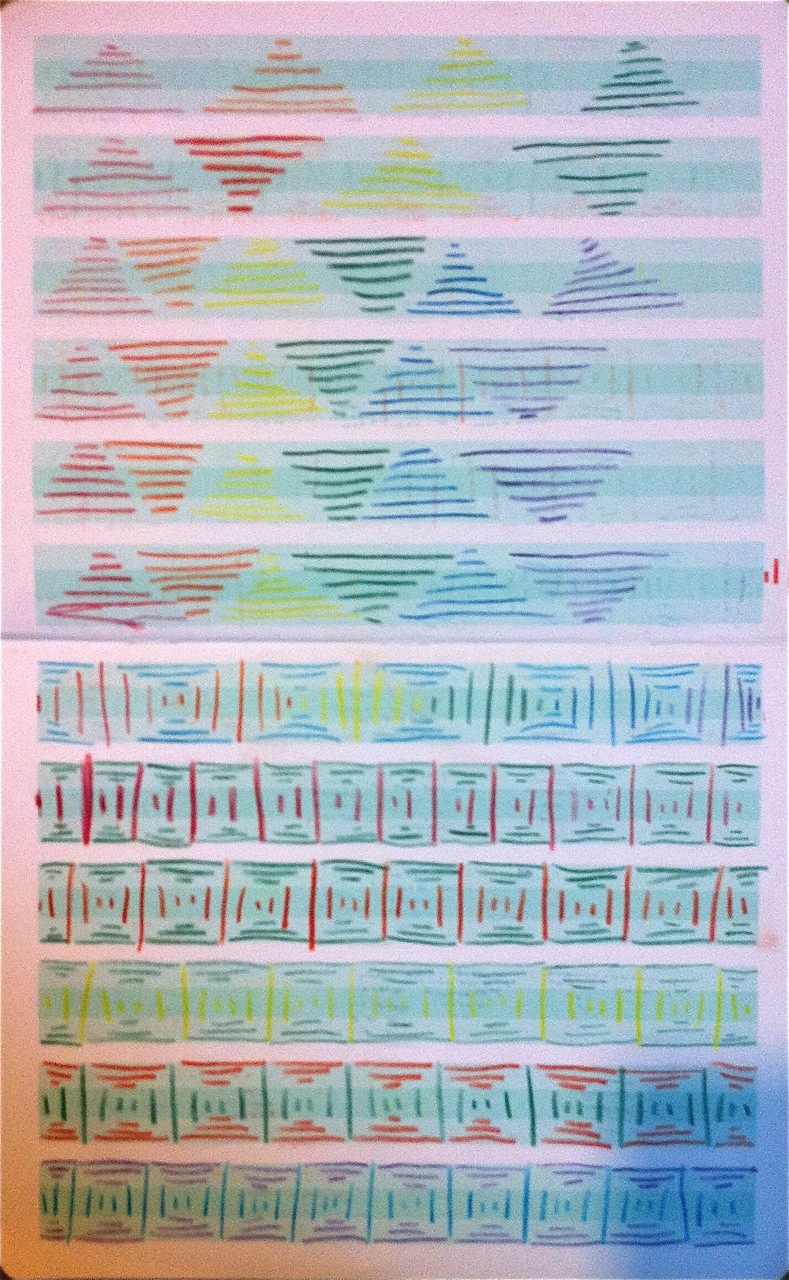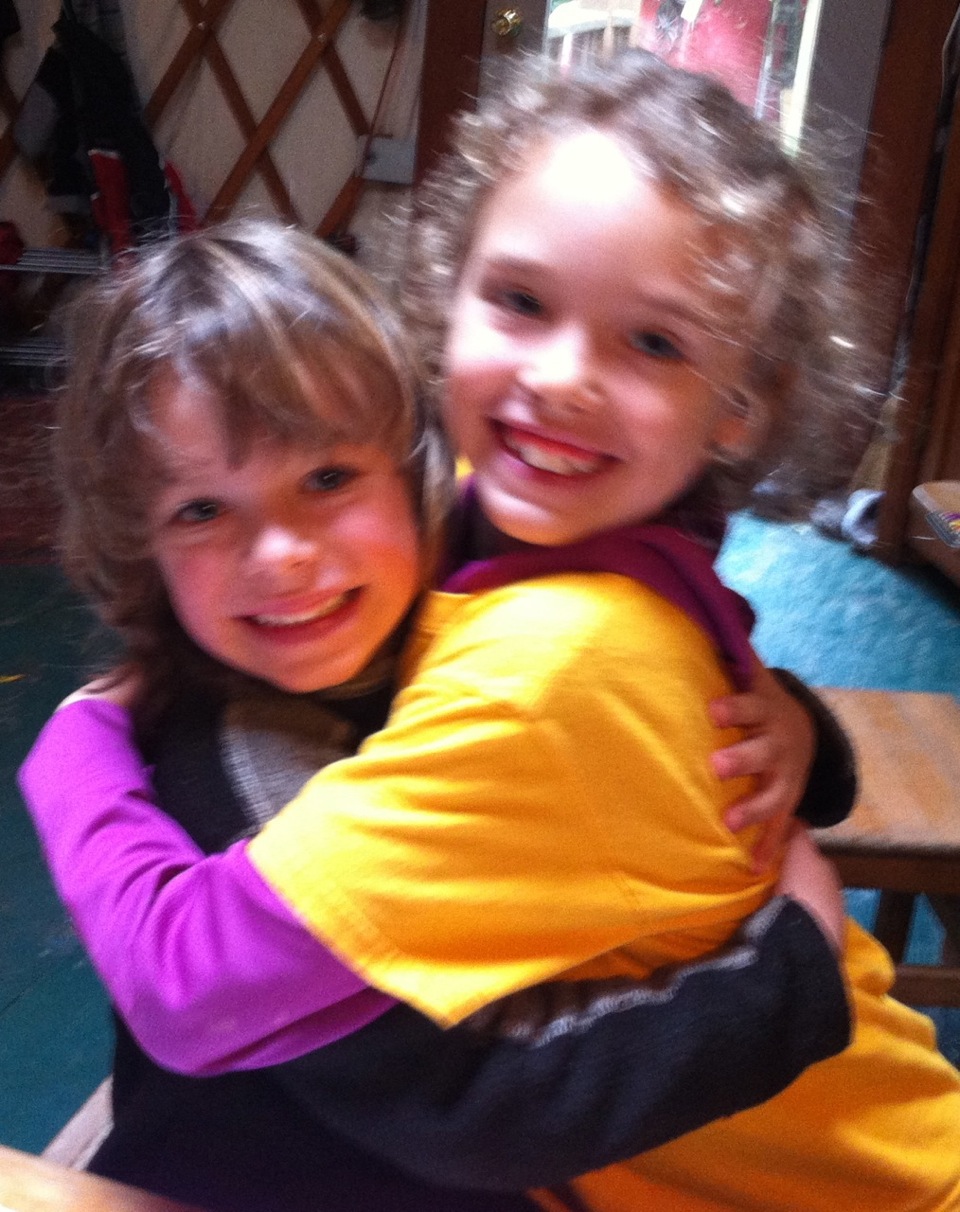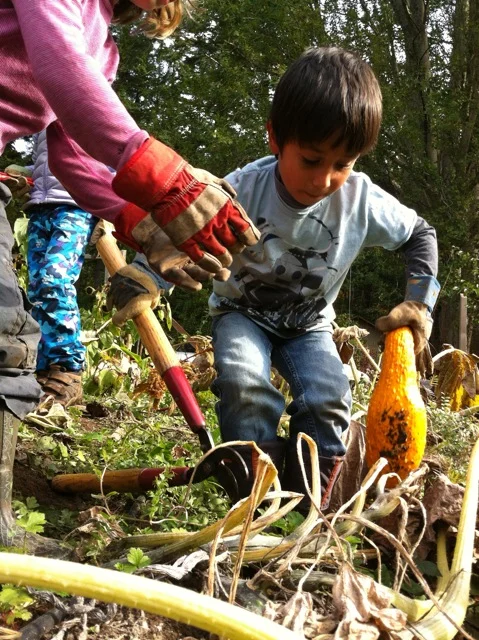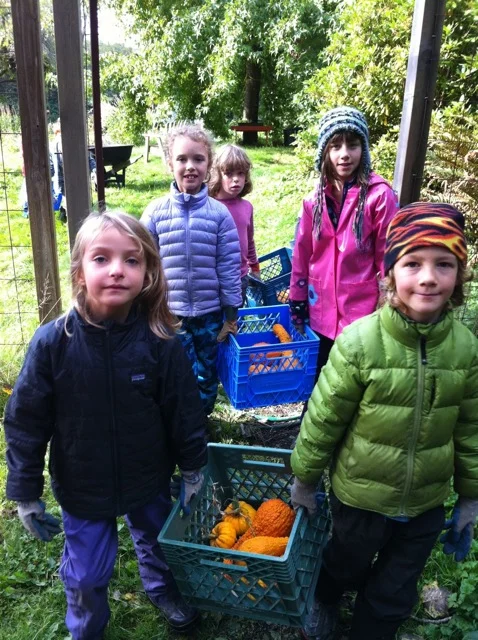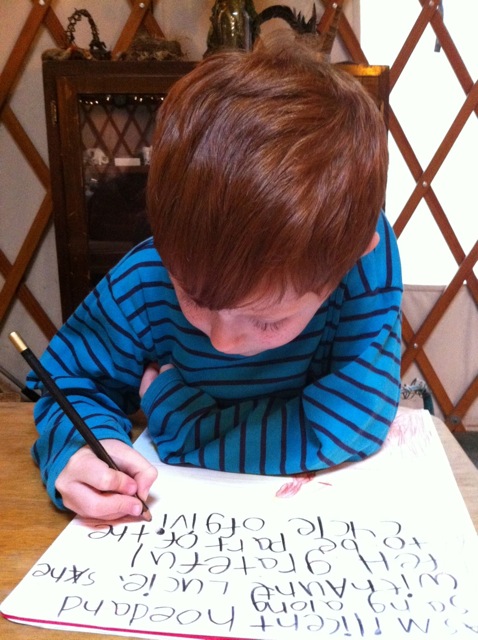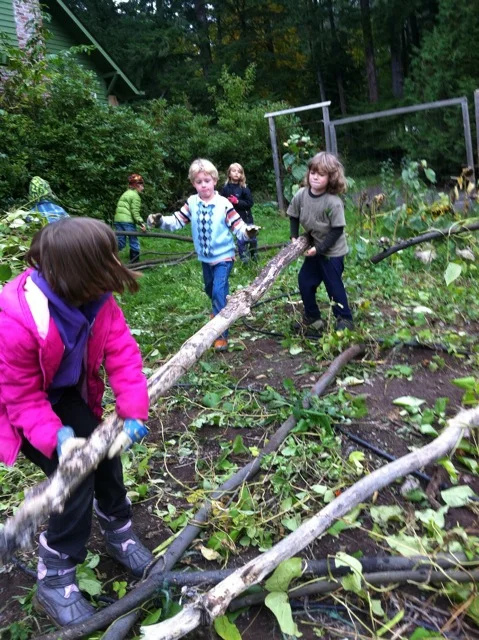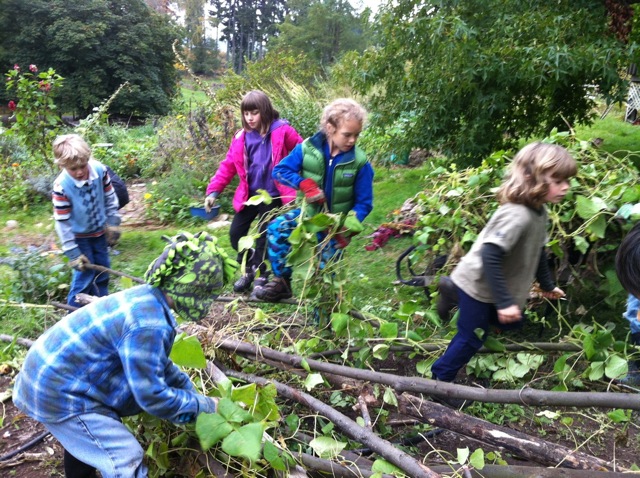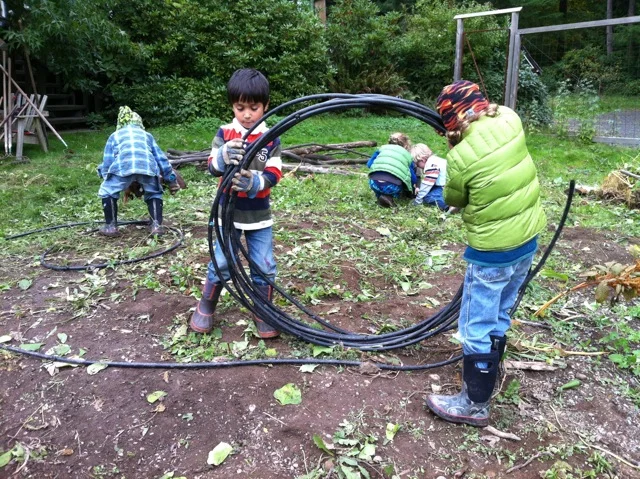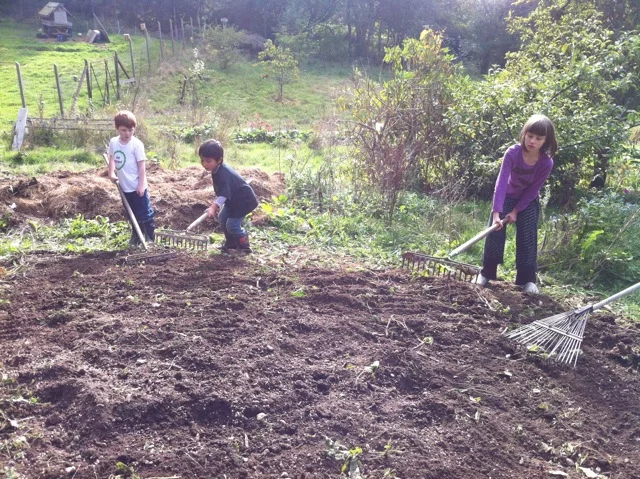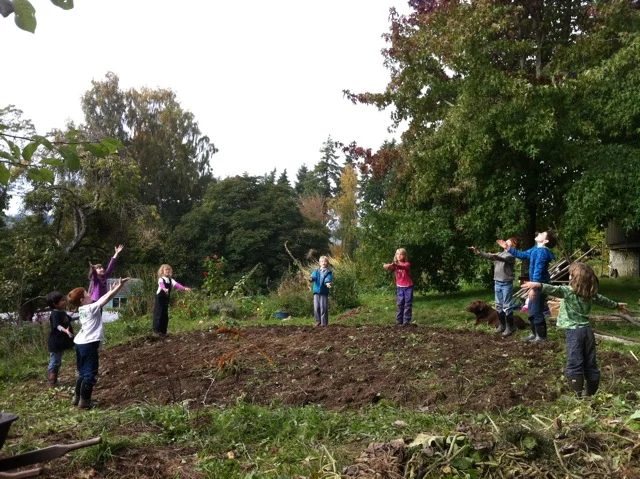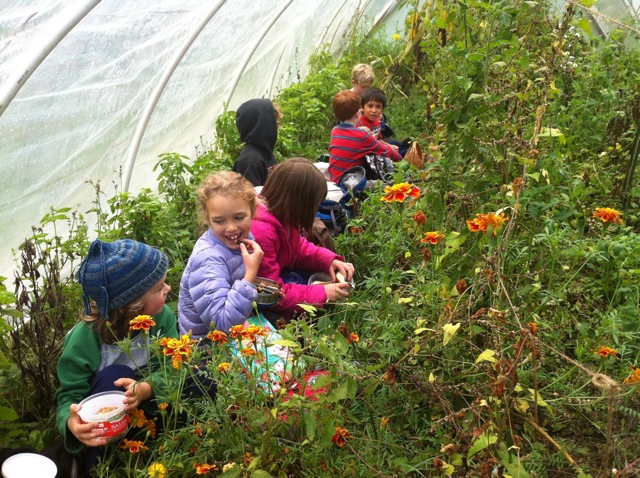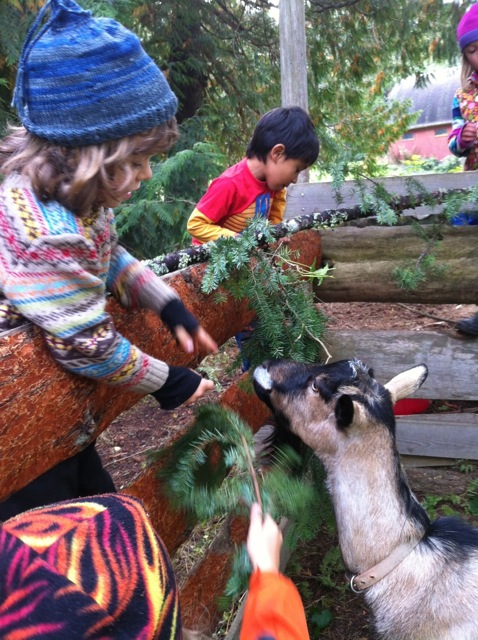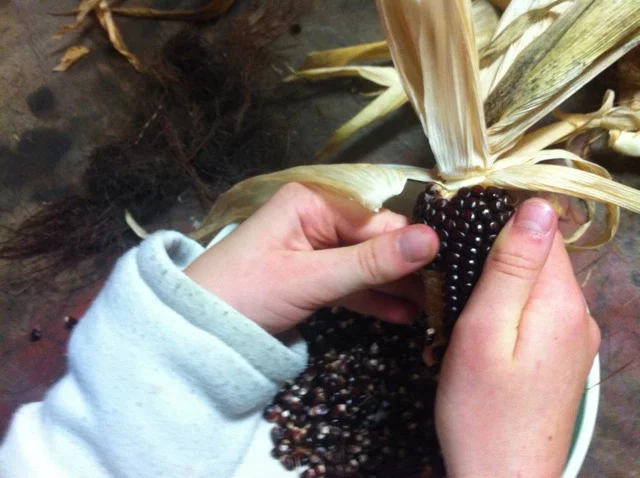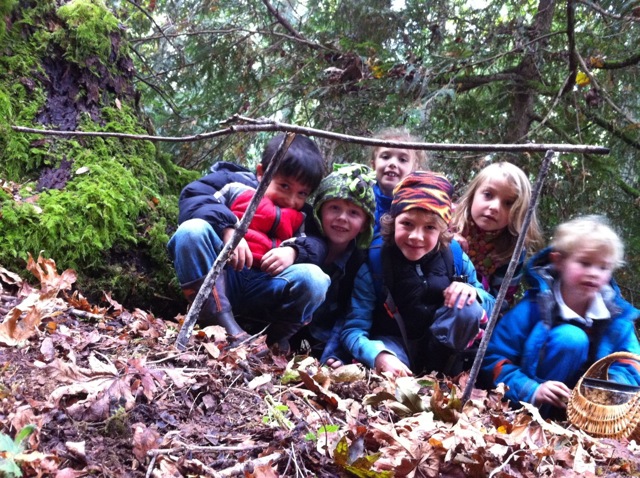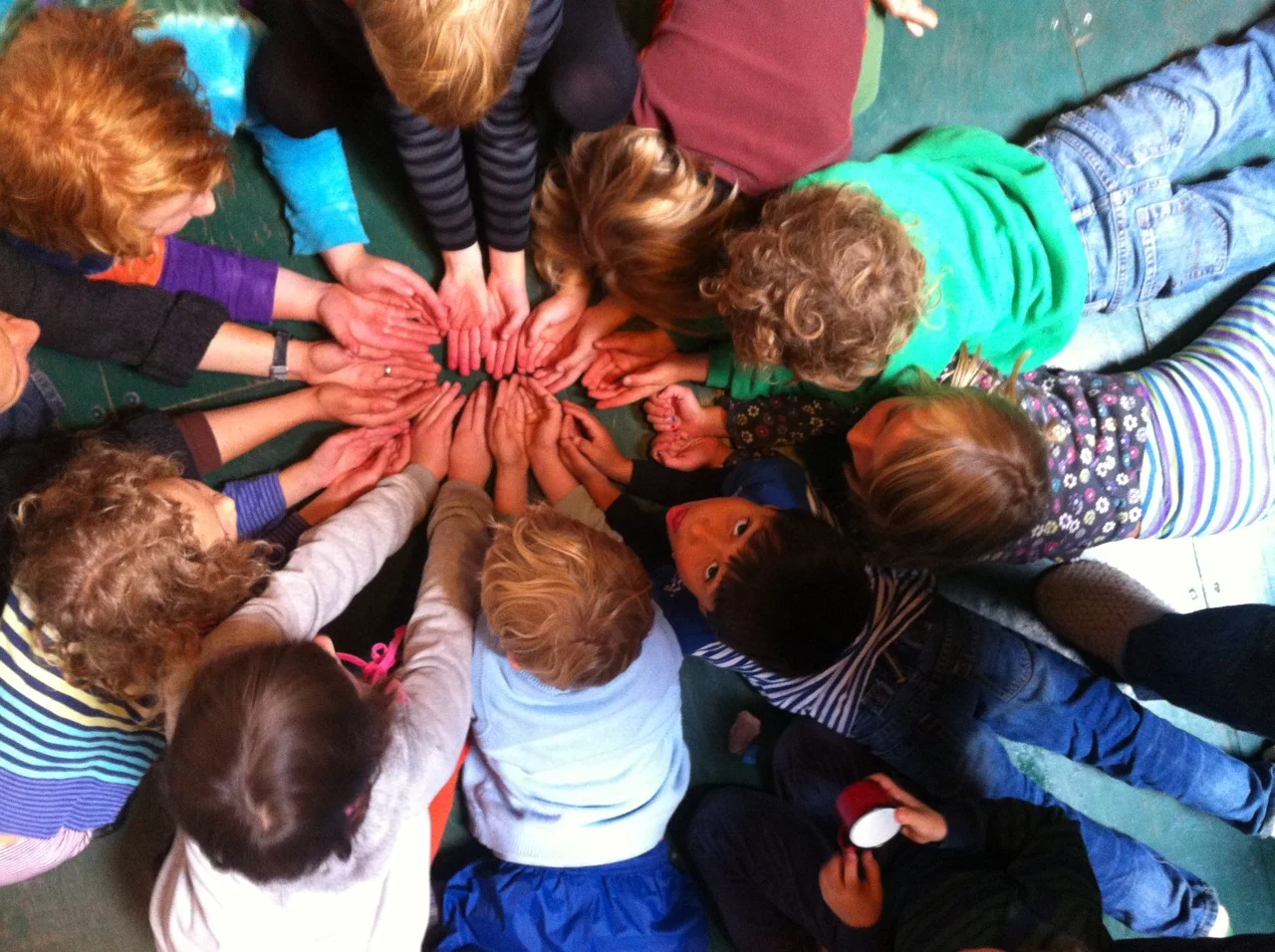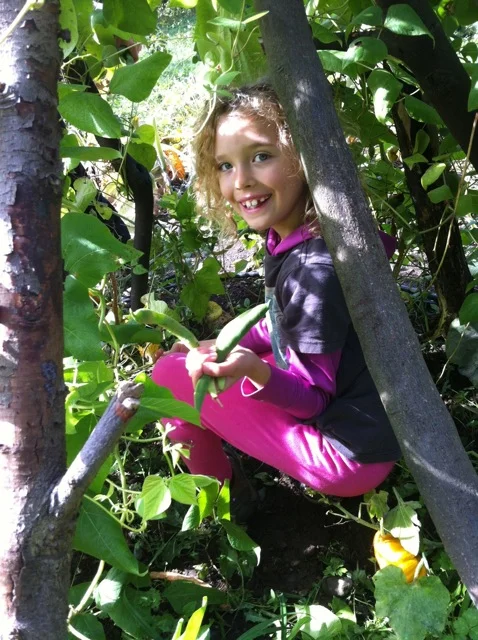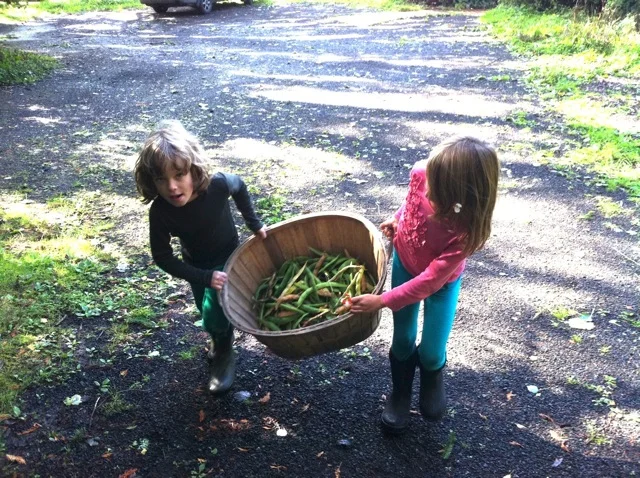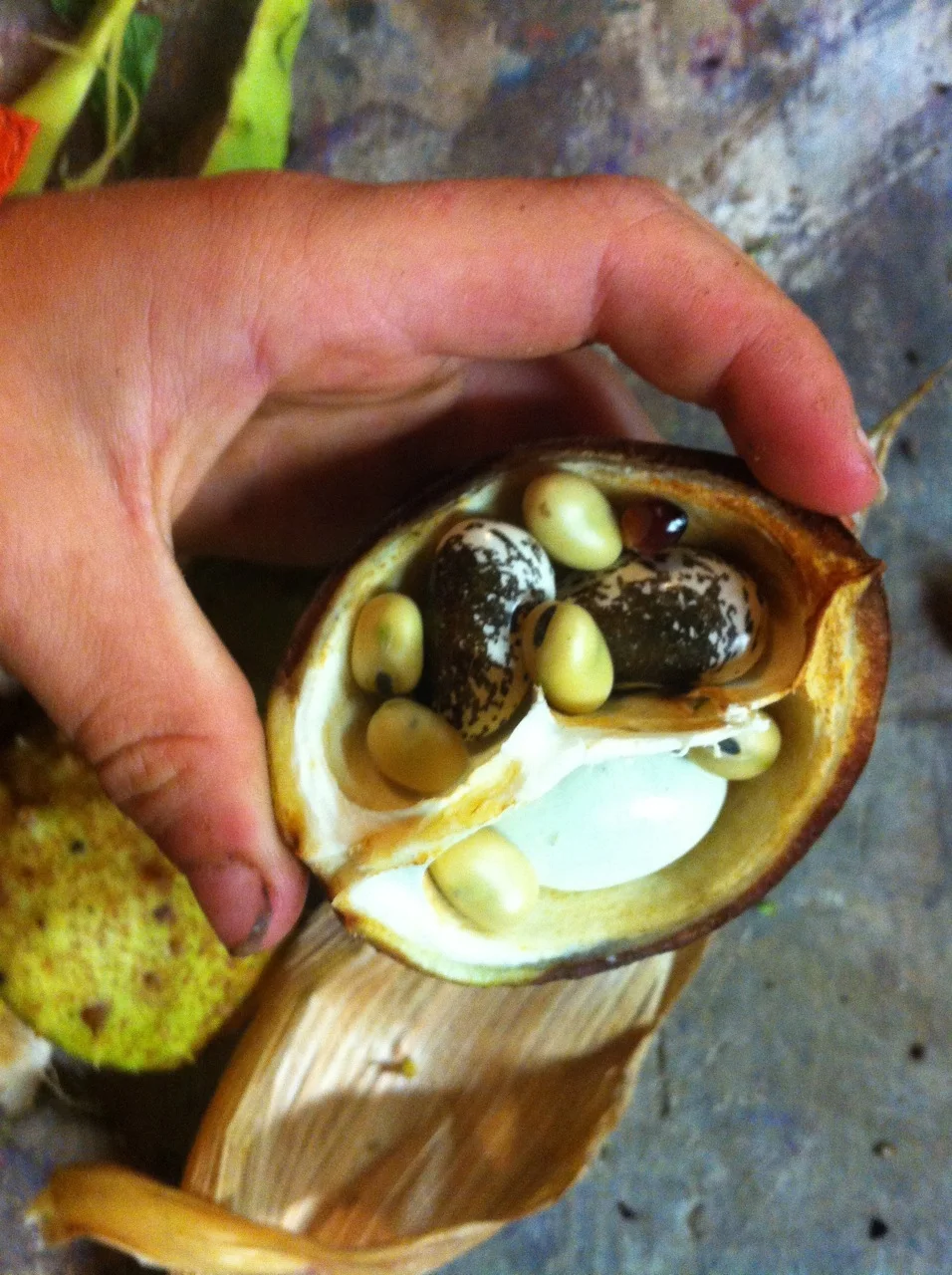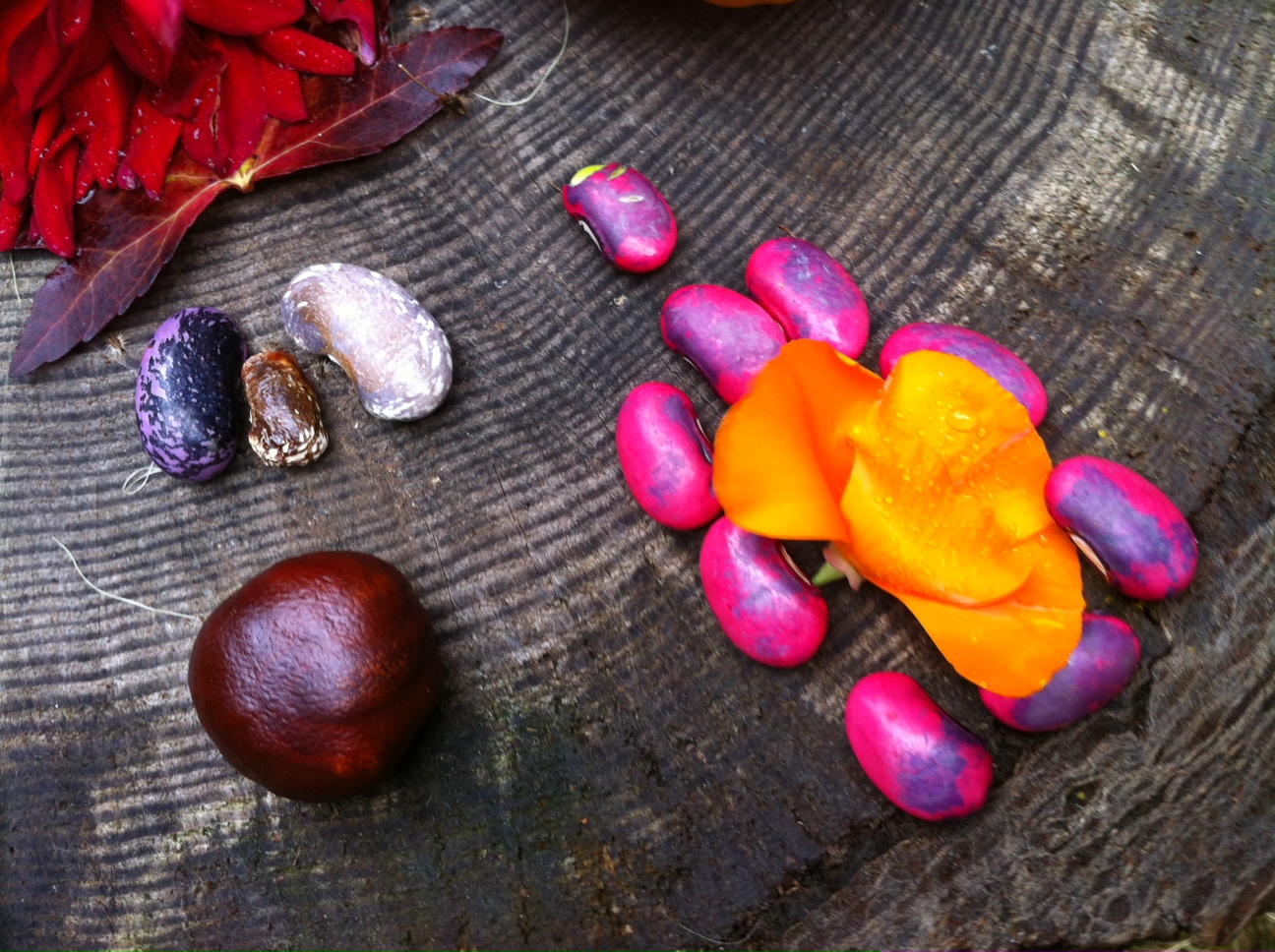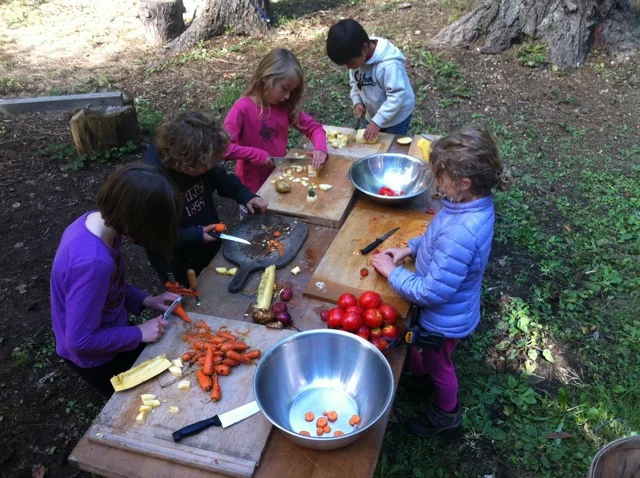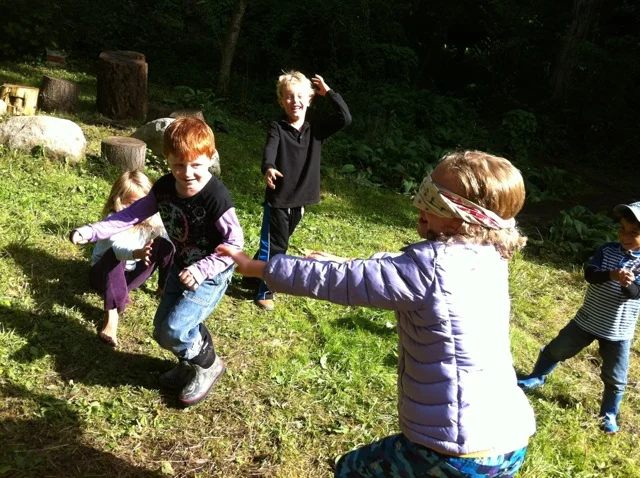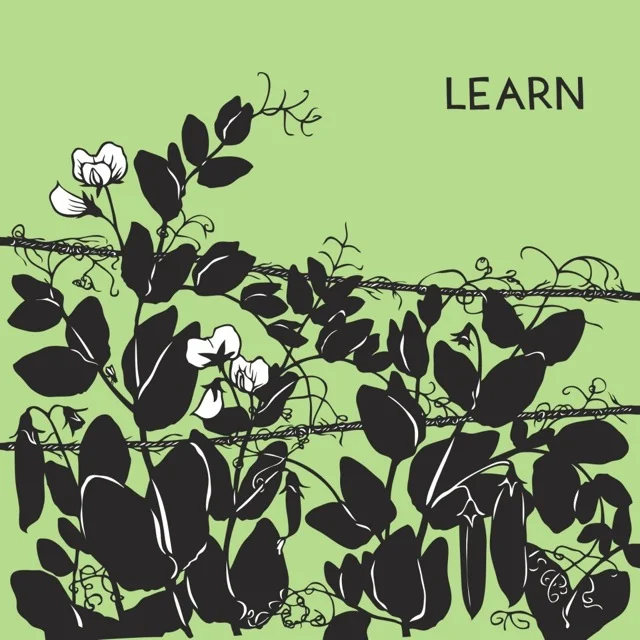week eight: "Providing"
Britt Freda
Our story illustrated the simple and sometimes challenging reality that for any animal to live, life is taken. Some animals kill plants and many must kill other animals to survive. The ducks eat duckweed and grubs and tadpoles. The raccoon mama feeding her young will kill the duck. And coyote may kill the baby raccoon. The squirrels eat seeds that otherwise might grow into trees and the owl eats the squirrel. Each species makes their best effort to stay healthy and raise their young. Wild animals only take what they need and in that way gratitude is known. We imagined the gestures various animals have that is their way of giving thanks. Just like we give thanks before we eat our snack together everyday at Homestead.
For math we wrote numbers in order in a grid, using a color pattern to identify and distinguish the even numbers from the odd numbers.
We began designing and building the chick and duckling enclosure. We acknowledged that we must behave like any mama hen and do what we can to provide a safety and nourishment for our young. The post pounding was a huge highlight. I expect we will finish sometime next week, as I am giving them full ownership of this project and that makes it slow going, but oh so satisfying.
